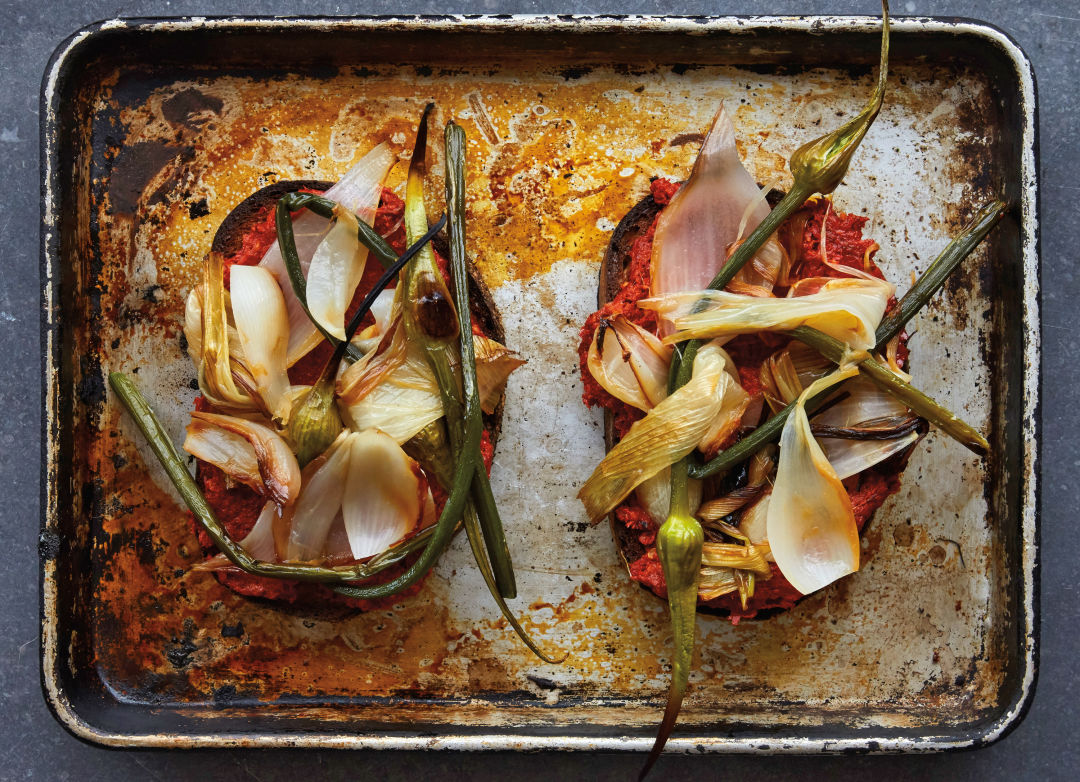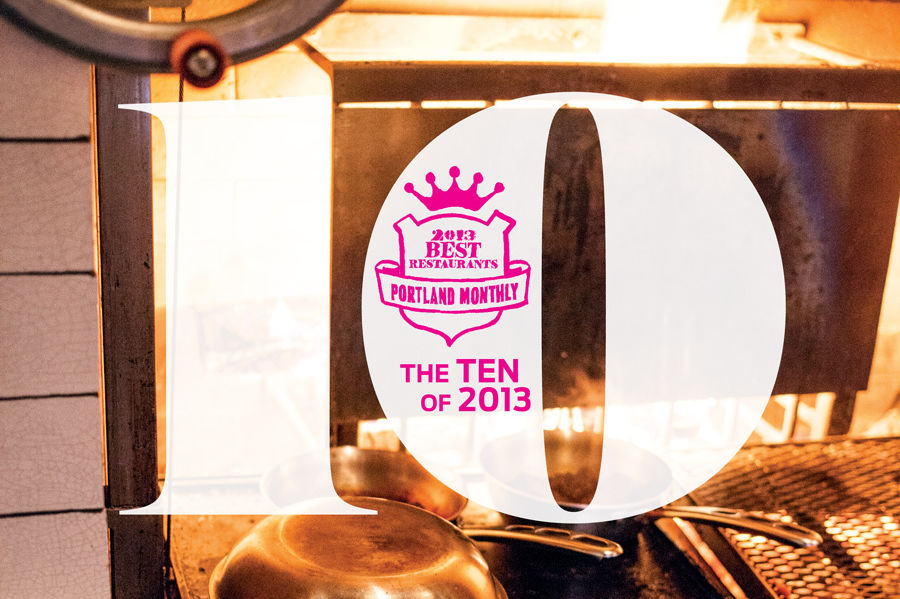This Portland Cookbook Might Put Meat Out of Business. It's That Good.

Onions three ways with nduja on grilled bread, from Six Seasons
Ava Gene’s opened in 2012, sheened with the mystique of owner Duane Sorenson, founder of the Stumptown Coffee imperium and cultivator of a scruffy persona that practically screamed that rock and roll would never die. But what ultimately made this Italian hot spot PoMo’s Restaurant of the Year in 2013 was the antithesis of Duane’s World: carrots. Ava Gene’s served them raw, cut like rough diamonds, then mixed with—of all things—pistachio butter and pecorino cheese. This is a salad? I still remember it vividly: the crunch, the audacity to replace vinaigrette with peanut butter’s exotic cousin, the flinty cheese. My notes at the time said: “Never seen this. Transforming idea. More than what it reads.” Ava Gene’s secret weapon was unknown chef Joshua McFadden—a man more interested in radishes than collectible Italian wines. Now he owns the place, literally (as well as Middle Eastern–leaning spot Tusk). In a larger sense, he’s emerged as a rare source of new ideas about vegetables in an increasingly complacent farm-to-table town.

Joshua McFadden
Image: Courtesy Peden+Munk
The excitement of that “When Josh Met Carrot” moment runs throughout McFadden’s first cookbook, Six Seasons: A New Way with Vegetables (Artisan Books, May 2017). It unfolds like the cooking year itself, as changing ingredients define spring; early, mid, and late summer; fall; and winter. The tight organization and user-friendly vibe are footprints of coauthor Martha Holmberg, a cookbook pro and former editor and publisher of Fine Cooking. McFadden’s forward-looking sensibility infuses every recipe. Veggie collections and seasonal tomes are increasingly generic or pedantic. McFadden looks beyond the usual staples and crutches, heaping fresh spring peas over toast and plopping a “salad” of chopped walnuts and raisins over soup. It’s raw food without a hint of dogma.
McFadden seems to intuit what works together, with a knack for seasoning—the touches of vinegar, cheese, or chile that bring it all home, with texture at the center of the action. Roasted cauliflower? What if you chopped it up with plums and threw in some yogurt, mint, and sesame seeds? That’s the McFadden way. It never occurred to you, and two minutes later, you feel like freaking Lucky Peach (RIP).
One of the best chapters centers on McFadden’s “Go To” recipes, including his “Whipped Ricotta”—a “spreadable flavor machine” for tomato salads, sautéed vegetables, or flatbreads. He's also got ideas for upping your radish game—grilled with dates and apples or roasted with butter, chile, and honey. From more than 200 recipes, I’ve already marked 20 to try. And I don’t even cook out of cookbooks. Only one thing is missing: that carrot recipe. McFadden: DM me?




